The Russia’s “special military operation” of Ukraine has created global reverberations on a scale not seen since 9/11 and re-set global politics. The transformational impact of this on geopolitics, global governance, and the global economy has been huge. Traditional relationships and alliances are being tested. In some cases these are reviewed. Given the scale of the conflict and its far-ranging implications, the policy reviews of some important stakeholders have threatened to reshape global politics as the seeds are planted for a more dangerous and unstable phase in international affairs. Talks of World War III already begun are very unnerving.
There is a strategic dimension to the Russian action in Ukraine that is backed by history. Those who have studied Russia’s policies in the 1939 when it cajoled Finland and then invaded would understand why and how Russia viewed its policy towards Ukraine in the same prism this time too. Right or wrong, this is the bitter truth of a nation’s foreign policy determined by strategic priorities.
As was in Finland’s case in 1939, this time too, Russia considered Ukraine within its natural sphere of influence and felt unease when Ukraine was seen to be drifting closer to the West. The possibility of Ukraine joining the NATO or the European Union unnerved Putin as NATO shall be on the border of Russia, exposing its security vulnerabilities. At present Ukraine is part of the neither but the very fact of a possibility of that happening worried Putin. Ukraine is dependent upon both the US and Europe for financial and military aid. Putin felt that Ukraine’s potential membership of the NATO posed an existential threat to Russia.[1]
To recapitulate briefly, in the prevailing global situation in 1939, then Joseph Stalin of Russia offered to swap territory with the Finns as he wanted Finnish islands to use as forward military bases in the Baltic Sea, as well as control of most of the Karelian Isthmus, the stretch of land at the southern end of which sat Leningrad. In exchange, he offered an expansive but boggy forest in Soviet Karelia, bordering Finland far to the north of the isthmus. When the Finns rejected the deal of the Soviet colossus, Stalin with his 170 million people, backed by the world’s largest military force at that time easily overran the country of four million with a small army. Though British Prime Minister Winston Churchill at that time and other European leaders hailed gallant Finland to fight against the Russian forces, the response remained only rhetorical. Neither did they send weapons to Finland to fight against the Russians, nor did they intervene militarily. A similar scene was re-enacted during the Korean War when Stalin was still in office. [2]
Stalin is gone, so also the Soviet Union after its disintegration. Yet Russia remains as a powerful nation with critical assets of the veto power in the United Nations Security Council. The present Russian President Vladimir Putin remains as powerful as was Stalin, though at a lesser scale but Russia’s foreign policy priorities based on strategic considerations remain unchanged. The present Ukraine crisis has similarities to Finland in 1939 needs to be understood from similar strategic prism. Whether Ukraine President Volodymyr Zelensky has been able to keep his honour, as compared to Finland in 1939, remains to be seen.
Impact on other Countries
Russia’s military operations in Ukraine have influenced other countries’ long-standing foreign policy stances for a re-think. Germany initiated process of shedding its doctrine of pacifism behind its foreign policy since World War II. Chancellor Olaf Scholz took a swift position and a harsher stance against Russia.[3] Germany felt compelled to shake its decades-old faith in military-averse foreign policy born of the crimes of the Third Reich and initiated a virtual U-turn and announced to strengthen its military.
Scholz announced to increase military spending to more than 2 per cent of the country’s economic output. He announced the release of immediately a one-off 100 billion Euros or $113 billion to invest in the country’s woefully underequipped armed forces. [4] He too announced to speed up construction of two terminals for receiving LNG, part of efforts to ease the country’s reliance on Russian energy.
Issue of NATO Membership
The issue of NATO membership has added another dimension to this debate. Because of already stated reasons, the possibility of Ukraine joining the NATO unnerved Putin due to geostrategic reasons. Now two Baltic States – Finland and Sweden – expressing desire to join the NATO alliance has again put Putin on the edge. Once neutral, both Sweden and Finland have expressed increasing unease by Russian activities near their borders. That neutrality is now being reviewed. Sweden was alarmed when submarines started appearing in the waters outside Stockholm. For quite some time, Sweden and Finland were under dilemma over their NATO membership bid. That hesitation seems now have been removed after the Russian provocations. The visit of Finnish President Sauli Niinistö to the US a week after the Russian action in Ukraine to discuss on the possibility was significant. NATO Secretary-General Jens Stoltenberg quickly welcomed Finland and Sweden if they decided to apply. If both these Baltic States finally decide to join the NATO, it would be obligatory for the military organisation to provide security guarantees if any potential membership bid angers Russia.[5]
At present, both Sweden and Finland are officially non-aligned militarily but public opinion in both the countries looks more favourable to NATO membership. [6] Multiple opinion polls in both countries suggest that public support for NATO membership – 50 per cent in Sweden and 60 per cent in Finland – has increased since Russia’s military operation in Ukraine.[7] It may be recalled that Putin had demanded that the 30-nation military organisation stop expanding and pull its troops back from Russia’s borders. Therefore, the prospect of Sweden and Finland joining NATO shall surely infuriate Putin. The geostrategic dynamics could get more complicated and pregnant with more troubles. What attracts both Sweden and Finland to the military organisation is that its collective defence clause obliges all members to come to the aid of any ally that comes under attack. A white paper on security is likely to be released soon in Finland and the option for accession to NATO might figure prominently. Finland has already planned on defence budget for the next four years and agreed to add $2.2 billion in the current year. This one-time boost in expenditure represents about 70 per cent increase from the Nordic country’s regular 2022 military budget. [8]
Form all possible indicators it transpires that there is a political will in Sweden to join NATO. Same is the case with Finland. Sweden’s political leaders are unwilling to be deterred by Moscow’s warning that Nordic nations’ accession would “not bring stability” to Europe. Sweden’s centre-left Social Democrats led by Prime Minister Magdalena Andersson have taken the position that the government could decide applying to join NATO even without the backing of members. Much before the parliamentary elections are to be held on 11 September, the centre-right opposition parties, including the far-right Sweden Democrats, have endorsed if the government makes an application to join NATO. Thus, there already exists an overwhelming consensus among political parties with differing ideologies to stand together on the security issue of the country, of which NATO membership is a critical element.
Indeed, Finland’s security vulnerability stems from the fact that it shares a 1,340 km (830 mile) border with Russia and therefore willing to abandon its position of strict neutrality and align its interests with NATO for its own security. It is likely that when the NATO summit is held in Madrid in June 2022, Finland shall submit its application to join. [9]
Both Sweden and Finland have the support from not only the NATO Secretary-General but also several NATO members such as the US, UK, Germany, France and Turkey. It goes without saying that Kremlin would see Sweden and Finland coming under the NATO fold as a provocation. That possibility shall complicate stability in the European continent.
The question that arises is why Sweden and Finland have an edge over Ukraine for NATO membership despite the fact that Ukraine has faced first the Russian assault, though none have formally applied to join? The two Baltic States are wealthy members of the EU with democratic base. In the event of Russian aggression, the US and EU are likely to come out with a stronger response as the economic and geopolitical consequences for them could be much greater than has been in the Ukraine crisis. Therefore, if these two Baltic States apply for the NATO membership, not only they would be almost immediately admitted but their security would be guaranteed by the US and the NATO. It has transpired that the same is not the case with Ukraine.
How are Finland and Sweden placed militarily on their own? Though small in territorial size, both have advanced militaries. Finland has a limited but a robust defence force and a large reserve army to mobilise on short notice in the event of any external attack. As regards Sweden, its military was once among the largest in Europe but the size was cut to more than half after the Cold War. This was in tune with the cut in defence spending in many European States. Both are willing also to make a net contribution to NATO’s military capabilities over time. Sweden also could increase the number of its citizens who are subject to conscription from the current 8,000 annually. There exist views that argue that the two Baltic States should be encouraged to apply to be members of the NATO, lest their neutrality could invite an opportunistic Russia to attack. That could be a futuristic scenario as Russia is too tied up in an escalating war in Ukraine and unlikely to think of attacking either Finland or Sweden. The US from its side might like to ensure that Finland and Sweden must share NATO’s security burden when admitted and not just enjoy the benefits it brings.
This brings into focus on enhancing US-Finnish and regional defence cooperation at bilateral level first. A Rand study on this concluded that defence cooperation can and should proceed at a slow yet steady pace, building on existing foundations and raising the level of ambition as political and resource constraints permit. The study concluded that “a combination of initiatives at the strategic and operational levels could yield long-term dividend if pursued systematically and with due consideration for political sensitivities on all sides”. [10]
In response to the perceived threat from Russia, both Sweden and Denmark have planned to boost annual spending on defence to 2 per cent of the GDP in response to a deteriorating situation in Europe following developments in Ukraine. [11] Owing to increasingly uncertain security outlook, even Germany has plans to sharply increase in defence spending. After decades of cuts in defence spending, Sweden’s defence capability has been considerably strengthened. Sweden has bought the Patriot air defence missile system from the US arms manufacturer Raytheon Co.
Sweden’s annual defence budget was around 3 per cent of the GDP in the early 1980s. After the end of the Cold War, it considerably fell. In 2022, the budget increased to 1.3 per cent of the GDP, an increase of 0.9 per cent in 2015. This is $7.18 billion in the current year. Not being a member of the NATO now, Sweden sees merit to enhance its defence spending up to 2 per cent of the GDP. [12] Indeed, Sweden is keen on security cooperation with several partners, including the NATO, but also bilaterally with Finland, Britain and the US. Sweden’s neighbour Denmark, which is in NATO, also has plans to rise spending to 2 per cent of the GDP by 2033.
Though Sweden is not involved in any war since 1814 and built its foreign policy on non-participation in military alliances, it has forged closer ties with friendly countries in recent times as tensions with Russia in the Baltic region have risen. But Sweden is not in hurry for NATO membership. Prime Minister Magdalena Andersson believes that if Sweden makes an application to join the NATO, it would destabilise security in Europe and exacerbate tensions.[13] Moscow too has warned both Sweden and Finland against joining the NATO. Andersson is unwilling to accede to the demand of the Opposition that the government makes an application immediately for NATO membership. However, a debate has already started both in Sweden and Finland to this possibility and political consensus is being explored. If either of the two makes the first move for the NATO bid, it would inevitably put pressure on the other.
In conclusion it can be said that Russia’s special military operation in Ukraine has left serious implication in other countries’ foreign policy priorities and compelled them to review relations keeping in view their own national security interests. The cases of Finland and Sweden, and could be Denmark and Germany too, are visible examples. These developments do not auger well for world peace. The global politics is heading towards uncertain times.
Endnotes :
[1] Jayant Prasad, “To avoid a cold Turkey”, Times of India, 10 March 2022,
https://timesofindia.indiatimes.com/blogs/toi-edit-page/to-avoid-a-cold-turkey-if-moscows-ok-with-kyiv-joining-eu-kyivs-ok-with-not-ever-joining-nato-talks-may-yield-results/
[2]Stephen Kotkin, “The Cold War Never Ended: Ukraine, the China Challenge, and the Revival of the West”, May/June 2022, Foreign Affairs, May/June 2022, “The Cold War Never Ended: Ukraine, the China Challenge, and the Revival of the West”, https://www.foreignaffairs.com/reviews/review-essay/2022-04-06/cold-war-never-ended-russia-ukraine-war?utm_medium=newsletters&utm_source=twofa&utm_campaign=The%20Cold%20War%20Never%20Ended&utm_content=20220415&utm_term=FA%20This%20Week%20-%20112017
[3] Mira Patel, “Explained: What’s made Germany shed its pacifism after the invasion of Ukraine?”, Indian Express, 3 March 2022, https://indianexpress.com/article/explained/whats-made-german-shed-its-pacifism-after-the-invasion-of-ukraine-7797948/
[4]Rajaram Panda, “Russia’s Action in Ukraine: Germany’s Response”, 11 March 2022, https://www.vifindia.org/article/2022/march/11/russias-action-in-ukraine-germanys-response
[5]Lorne Cook, “NATO Chief says Finland, Sweden welcome to apply to join”, 6 April 2022, https://apnews.com/article/russia-ukraine-nato-jens-stoltenberg-finland-europe-e80256ebe24bc5349724f4038784bd38
[6]Jon Henley, “Sweden and Finland make moves to join Nato”, The Guardian, 11 April 2022, https://www.theguardian.com/world/2022/apr/11/sweden-and-finland-make-moves-to-join-nato
[1]Ibid.
Kati Pohjanpalo, “Finland Makes 70% Defense Spending Increase in Shadow of War”, 5 April 2022, https://www.bloomberg.com/news/articles/2022-04-05/finland-adds-2-2-billion-defense-spending-in-shadow-of-war
[8]Christopher S. Chivvis, “The Dilemma at the Heart of Finland’s and Sweden’s NATO Membership Bids”, 14 April 2022, https://carnegieendowment.org/2022/04/14/dilemma-at-heart-of-finland-s-and-sweden-s-nato-membership-bids-pub-86890?utm_source=ctw&utm_medium=email&utm_campaign=butto
[9]Gene Germanovich, James Black, Linda Slapakova, Stephen J. Flanagan, Theodora Ogden, “Enhancing US-Finnish and regional defence cooperation”, (2021) https://www.rand.org/pubs/research_reports/RRA1424-1.html
[10]Johan Ahlander, “Sweden plans to up defence budget to 2% of GDP as Russia threat looms”, 10 March 2022, https://www.reuters.com/world/europe/sweden-finland-further-strengthen-security-cooperation-2022-03-05/
Ibid.
[11] “Swedish PM rejects opposition calls to consider joining NATO”, 8 March 2022, https://www.reuters.com/world/europe/applying-join-nato-would-destabilize-security-situation-swedish-pm-says-2022-03-08/
(The paper is the author’s individual scholastic articulation. The author certifies that the article/paper is original in content, unpublished and it has not been submitted for publication/web upload elsewhere, and that the facts and figures quoted are duly referenced, as needed, and are believed to be correct). (The paper does not necessarily represent the organisational stance... More >>
Image Source: https://www.marketplace.org/wp-content/uploads/2022/03/GettyImages-1238357286.jpg?w=600

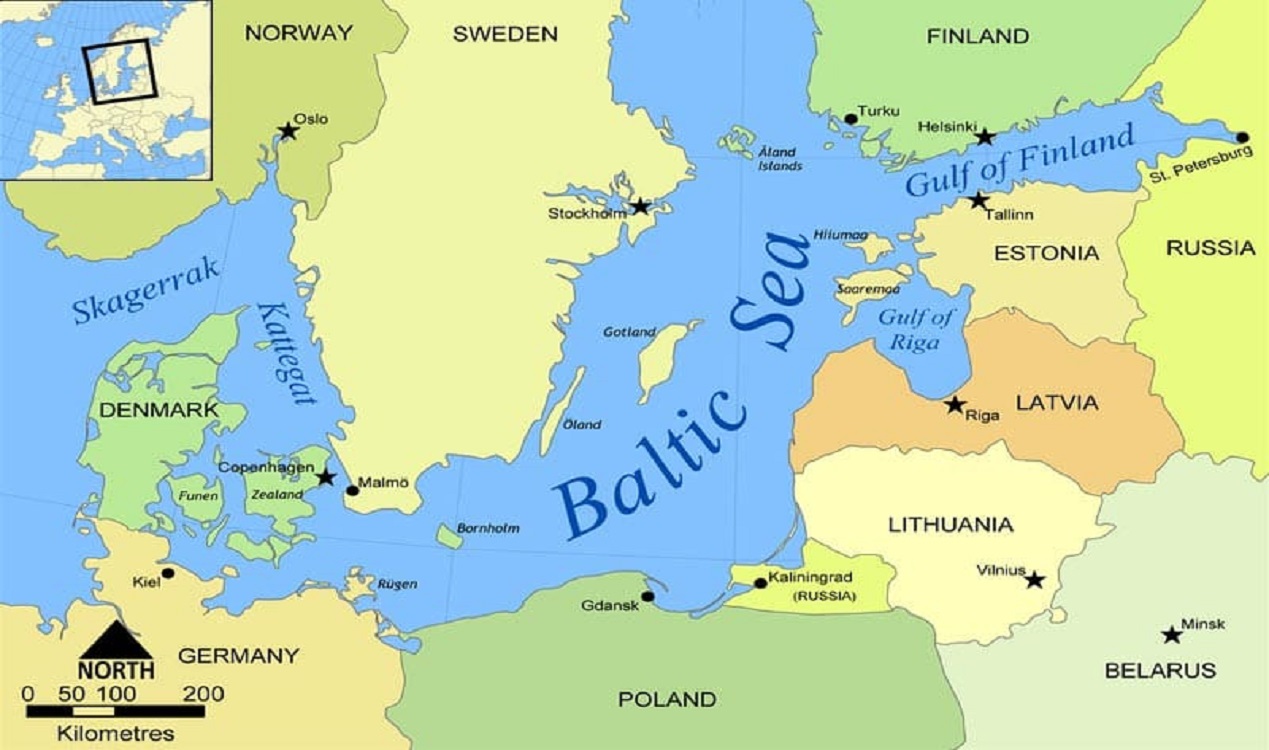
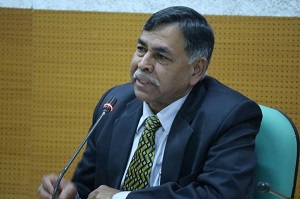

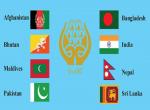

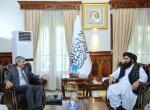
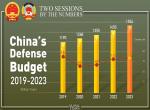
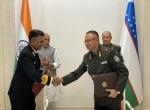
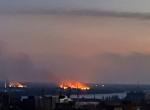
Post new comment